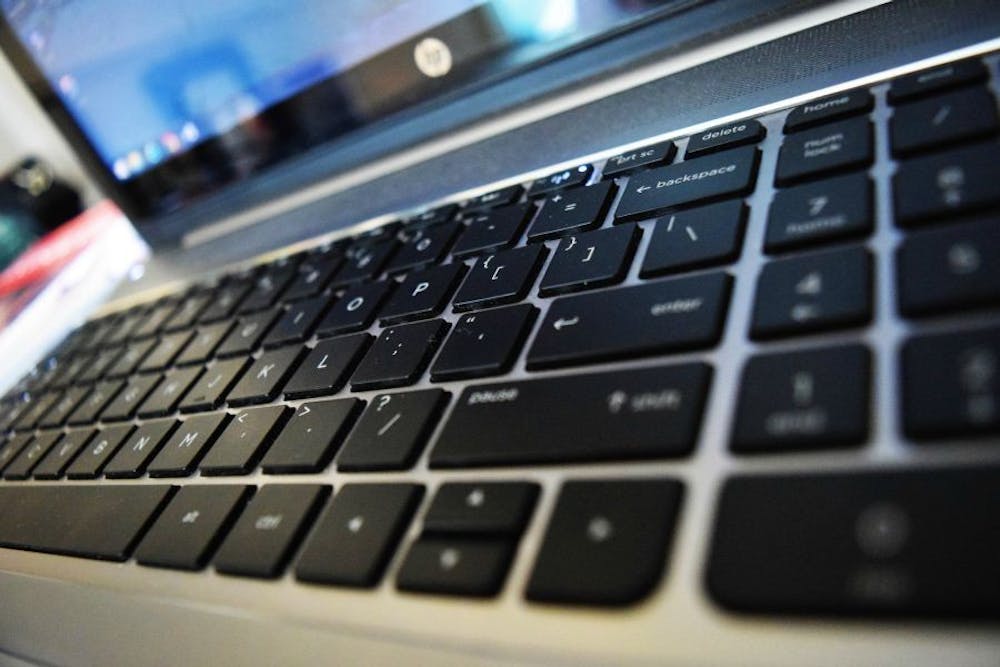As Miami shifted online, each department faced unique problems stemming from the transition. Information Technology (IT) services were at the center of it all. Throughout a typical year, IT’s role is crucial, but as students moved away from campus, IT’s impact was even more important to Miami’s success online.
Typically, when students think of IT, they think of calling the services to fix their Zoom or email. It’s true that this is part of IT services, but there is so much more. IT is part of every student’s day-to-day life, whether we realize it or not.
They are behind the scenes of all the technology on Miami’s campus. Around 100 people work within the IT department in a variety of roles — from application support and programming, to system analysts and desktop support — and members are around us every day. They change broken projector light bulbs and make sure emails are flowing through the network.
Randy Hollowell, the manager of IT communications, helps oversee Miami’s transition online. Typically he is in charge of finding the right person within IT to resolve issues or to communicate with faculty and students how to troubleshoot their technology issues.
“We have a hand in everything, but it’s somewhat behind the scenes,” Hollowell said. “If you don’t know we exist, it’s probably not a bad thing.”
Hollowell understood it was important to provide both Zoom and Webex for students. Having both can provide a backup in case one went down throughout the school year.
“Especially now, (it’s) a service that people rely on so heavily,” Hollowell said. “We knew we had to get it in before the start of school.”
Usually it takes IT six months to install new services for students. By taking the time and collaborating between teams, they were able to work out any bugs before students and faculty start working with it. For Zoom, they had it completely up and running in just a month.
“I’ve been here almost 17 years and I’ve never seen us being able to do that kind of implementation that quick and that well,” Hollowell said.
Not only was there a need for a large change online, but in Miami’s classrooms as well. This summer, a team from IT updated 400 classrooms across Miami’s campuses in preparation for a potential return to in-person learning. The updates include new webcams and microphones, allowing students who stay home to feel better connected to campus.
This is important for many students who don’t want to risk their health by returning to campus, and it provides them with nearly the same experience from their homes.
“If you have students that are in quarantine or are sick … They can basically login using Zoom or Webex remotely and still get a very similar experience to being in the class,” Hollowell said.
Enjoy what you're reading?
Signup for our newsletter
David Seidl, vice president of IT, has broad oversight over Miami’s IT department andwas part of the discussion regarding updating classrooms. Seidl understood they had to prepare for a number of situations without wasting the university’s time or money.
Seidl worked based on the assumption that hybrid classes would be the new normal for students.
“Even if we don’t [go back in person], it means that faculty members can come in and teach out of a classroom,” Seidl said. “The experience is a little different, and you’re more in your native territory for teaching, and that’s a mindset thing.”
Scott Campbell is the senior director of technology and a professor in the engineering department. He works as an academic director of technology (ADOT) as the first line of support for his division. He worked with other ADOTs and central IT to roll out updated classrooms.
As a professor, he has been teaching out of updated classrooms in the engineering building to practice using the technology. At first, the building was completely empty.
“It was kind of cool at first, but it got lonely real quick,” Campbell said.
Now with staggered scheduling, he is able to see other faculty in the building throughout the week.
Campbell also worked to create a technology grant for faculty that is funded by the provost. The money goes toward faculty and staff who need updated technology in order to host their classes to the best of their ability.
“I think that’s been very effective in getting people the tools they need to teach well,” Campbell said.
As the updates roll out across campus, both online and physically, all IT can do now is wait for students to return in order to gauge their effectiveness for the months ahead.




